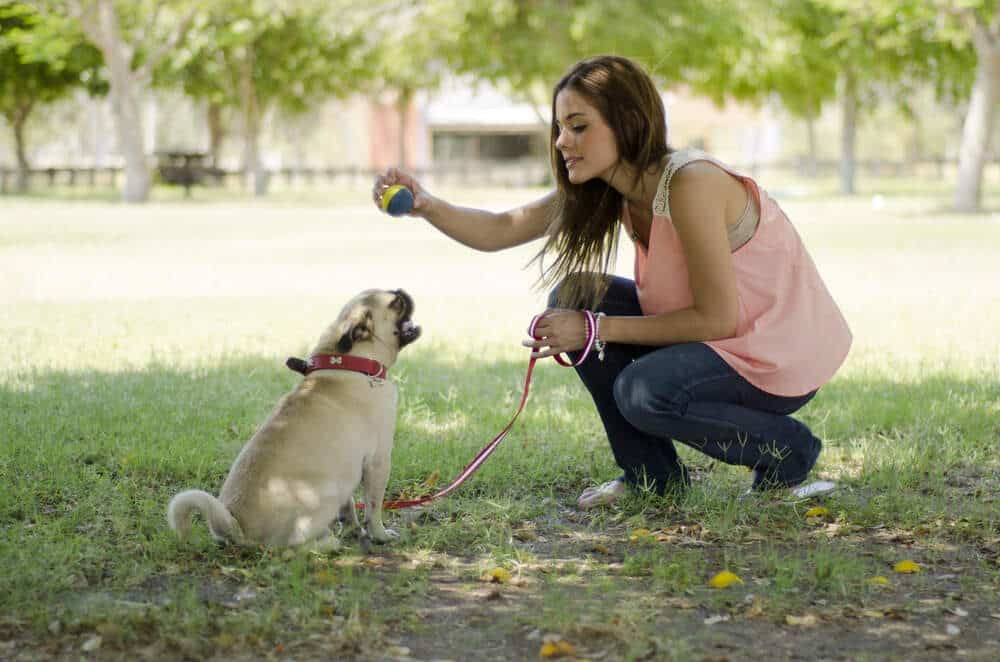Mistakes to avoid during leash training: An important skill that any puppy must learn is walking on a leash with a collar. In addition to the importance of such a skill for the pet, leash training will increase the puppy’s attachment to the owner and significantly improve obedience. So, let’s know mistakes to avoid during leash training.
Here’s a breakdown of common mistakes to avoid while leash training your dog, with a focus on creating a positive experience for your pup:
Common Leash Training Mistakes
- Rushing the Process: Puppies have short attention spans and learn at different paces. Trying to force training sessions or expect too much too soon frustrates you and the puppy.
- Improper Gear: A collar that’s too tight or loose or a leash that’s too short/long hinders training. Focus on comfortable, well-fitting equipment designed for your dog’s size.
- Starting in Distracting Environments: Expecting a puppy to focus in a busy park before they can walk nicely on a leash at home is unrealistic. Start Training in a calmer setting, then slowly increase distractions.
- Using the Leash as Punishment: Jerking the leash, yelling, or using harsh equipment like prong collars create a negative association with the leash and damage your bond with your dog.
- Inconsistency: If rules about pulling or good walking change from situation to situation, the puppy will need clarification; regular, short training sessions and consistent rewards are key.
- Not Enough Positive Reinforcement: Training should be FUN for your puppy! Praise, treats, and play for walking nicely are far more effective than focusing solely on correcting pulling.
Additional Mistakes to Watch Out For:
- Putting the Collar on a Hungry Dog: Your puppy will be too focused on food to learn calmly. Training sessions work better when your pup is content and not starving.
- Using Negative Training Methods: Outdated “dominance” techniques like alpha rolls and harsh corrections are unnecessary and damaging. Positive reinforcement builds a better relationship and reliable results.
- Giving Up Too Soon: Training takes time! Be patient, celebrate small victories, and don’t be afraid to seek professional help if needed.
Key Takeaways
- Leash Training = Positive Experience: The leash should represent walks, exploration, and fun with you – not punishment.
- Start Early, Go Slow: Young puppies learn quickly. Short, playful sessions build the right foundation.
- Focus on the Good: Rewarding what you DO want (loose leash walking) trains your dog faster than correcting every mistake.
- Be Patient, Be Kind: Dogs thrive on positive connections with their humans. Leash training is a journey, not a race to perfection.
Remember: A well-trained dog on a leash is a happy, safe, and enjoyable companion for outings and adventures!
How To Leash Train Your Dog?
When a puppy is trained to walk on a leash, several dangers and negative situations can be avoided. Thus, an animal on a leash will be maximally insured against possible dangers that await a dog in an urban environment. The animal will not get lost, will not get hit by a car, will not run into homeless or aggressive relatives.
- Let Your Dog Familiarize With Leash:
It would help if you only thought about walking in open areas once. You should not think about walking in open areas until the puppy is accustomed to a leash and Collar. It would help if you accustomed your puppy to a collar at home with a familiar environment. Only after the pet treats the equipment well can you try walking in the house’s yard.
- Choose The Training Place:
The training process can occur in the apartment and at the entrance. It would help if you allowed the puppy to sniff everything new to him. Otherwise, he will be constantly distracted, trying to escape.
- Choose The Most Appropriate Time:
To teach your puppy to walk nearby on a leash, you need to choose the most appropriate time. The pet should be calm and well-fed. You must approach your pet, talk to him tenderly, establish contact, and pet him. Show a new piece of future equipment and allow the puppy to get acquainted with it, sniff it, and lick it.
- Reward Your Dog:
As soon as confidence in the new item increases, it would help if you tried to put it on as carefully as possible. Be sure to talk kindly and reward him with a treat.
Having noticed that the dog is showing concern, you need to try to switch attention to another object, for example, a favorite toy. The first time wearing the Collar takes from 5 to 10 minutes. Then, the equipment is removed, and a treat is given.
- Give Your Dog Time:
A few days after Training to the Collar, the animal should begin to behave calmly. In this case, the time of wearing ammunition can be increased.
Experienced dog breeders assure you that you should not follow his lead as soon as the puppy attempts to remove the Collar on his own.
It is prohibited to remove the Collar at this moment. It would help if you tried to switch attention and remove the equipment as soon as the puppy calms down.
Mistakes To Avoid During Leash Training:
Mistakes when training dogs In the practice of dog training, there are cases when, for various reasons, dogs stop forming conditioned reflexes. Behavior also changed, and previously developed skills were inhibited. So, mistakes should be avoided during leash training.
- Subjective Understanding Of The Essence Of Dog Behavior:
This gross mistake occurs among many trainers, especially those who need to be sufficiently prepared theoretically and have little knowledge of the physiological basis of the behavior and Training of dogs.
- Incorrect Use Of Conditioned And Unconditioned Stimuli:
One of these errors is the incorrect combination of conditioned and unconditioned stimuli. In this case, the dog does not form a conditioned reflex.
- Training Without Taking Into Account The Individual Characteristics Of The Dog:
It is detected when checking the degree of preparedness of dogs at the end of the first and the beginning of the second periods.
When analyzing the reasons for the large number of low-prepared dogs, it is often revealed that Training was carried out without taking into account the individual characteristics of each dog.
- Excessively Repeated Repetition Of The Same Techniques:
One of the mistakes of inexperienced trainers is their desire to quickly polish and strengthen the dog’s conditioned reflexes.
For this purpose, the same technique is practiced without interruption 4-5 times or more. As a result, depression of the central nervous system occurs, as well as the extinction of the conditioned reflex. Subsequently, the dog refuses to work.
- Improper Use Of A Leash:
Short and long leashes are an important means of influencing the dog to control its behavior. Therefore, the training results largely depend on trainers’ ability to use leashes. Quite often, especially in the first period of Training, mistakes are made when using the leash, negatively affecting the quality of the dog’s development of conditioned reflexes.
- Inappropriate Use Of Perforce:
Some trainers have the habit of constantly leading the dog on perforce. However, using perforce is one of the extreme measures of coercion, necessarily combined with the appropriate command and intonation.
- We Use Inappropriate Ammunition:
Echoes, strict collars, nooses, and jerk chains do not improve the situation and often lead to new behavioral problems.
- The Collar Should Not Squeeze Or Rub The Animal’s Neck:
A prerequisite is comfort for the pet. The Collar should not squeeze or rub the animal’s neck. The optimal distance between the neck and the Collar is two human fingers. A collar that has been selected and fastened should not dangle freely. Otherwise, the dog will quickly understand how to get rid of it and remove it with its paws.
- Do Not Put The Collar On A Hungry Dog:
It is recommended that you attempt to put the Collar on your dog before he has eaten. A hungry animal, under the influence of instincts,
will focus on food, not paying much attention to what is hanging around its neck. Games and feeding after wearing the Collar form a positive association with the pet.
Conclusion:
One of the secrets in teaching a small puppy to a leash is maximum patience from the owner and following certain instructions. The sequence of actions cannot be disrupted during the learning process.


